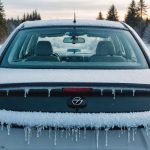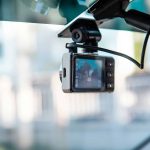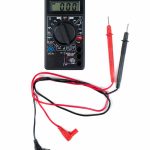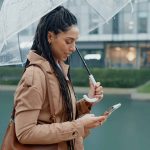The surge of electric vehicles hit every corner of the automotive market. From sleek city cars to robust off-road vehicles, the revolution is unstoppable. One of the leading figures of this shift is Land Rover, a British car manufacturer synonymous with elegance and power. However, a common concern among drivers of electric off-road vehicles like Land Rover is the potential damage caused by water, especially rain. Ensuring the waterproofing of your electric vehicle’s electrical system is crucial to its performance and longevity. In this article, we provide a comprehensive guide on how to effectively waterproof the electrical system of a British off-road vehicle.
Understanding the Role of Proper Waterproofing
Before getting into the thick of things, it’s important to understand the role and significance of effective waterproofing. Electric cars, such as the Land Rover, operate on complex electrical systems, powered by a battery. Any exposure to moisture can lead to short circuits, lowered performance, or worse, total system failure.
Also to discover : What are the key features to look for in all-weather floor mats for a British family car?
Waterproofing isn’t just about shielding your vehicle from heavy rain or water crossing during off-road adventures. It’s about ensuring that every drive, every road trip, is smooth, efficient, and worry-free. Whether it’s a sprinkling of rain or a sudden downpour, you want to make sure that your vehicle can withstand the elements.
Identifying Key Areas for Waterproofing
When it comes to waterproofing your electric Rover, focusing on some key areas is crucial. The battery, the engine bay, and the interior electronics such as the car’s dashboard and entertainment system, are all susceptible to water damage.
Additional reading : How can you set up a dashcam in a British car to capture a full 360-degree view?
The battery is the heart of your electric vehicle. Ensuring its protection from water is paramount. Similarly, the engine bay houses numerous electronic components that facilitate driving. Any water penetration can seriously hinder the vehicle’s performance. Lastly, the interior electronics are crucial for a comfortable and enjoyable drive. Any water damage can lead to malfunctions in the navigation, entertainment, or even essential driving information system.
Utilizing Waterproof Covers and Sealants
Now that you know where to focus, it’s time to discuss the tools. Waterproof covers and sealants are your best allies in the battle against water damage. For the battery and engine bay, waterproof covers are a must. These custom-fit covers provide a secure shield against any water penetration.
Sealants, on the other hand, are perfect for any cracks or gaps where water could creep in. Premium quality waterproof sealants can effectively block these entrances, keeping your electrical components safe and dry.
Applying Regular Maintenance and Checks
Waterproofing isn’t a one-time task. It’s an ongoing process that requires regular maintenance and checks. Regular inspections of your vehicle’s waterproofing measures ensure they’re in top shape and ready to fend off any water threats.
Routine maintenance includes checking the waterproof covers for any damage or wear and replacing them if necessary. The sealants should also be checked regularly for any erosion or weakening. In addition, drive the vehicle in a controlled wet environment, like in light rain, to test the effectiveness of your waterproofing measures.
Emphasizing Safety Measures
Finally, it’s important to emphasize safety measures when waterproofing your electric vehicle. When dealing with electrical components, always make sure to turn off the vehicle and disconnect the battery.
During any water exposure, if the dashboard lights start flickering, or there’s a sudden loss of power, it’s best to stop the vehicle immediately. It’s also recommended to carry a car cover, especially during off-road drives. This provides an extra layer of protection against sudden rain.
Remember, waterproofing is an investment in your electric Rover’s health and your peace of mind. So, while it might seem complicated at first, once you’ve done it, it’s a smooth ride ahead. Drive safe, and enjoy every journey in your robust and reliable electric Rover.
Handling and Protecting Electrical Connectors
The electrical connectors are the nerves of your electric car. These essential components transmit electric signals and power from the battery to various parts of the vehicle. They are found in the engine bay, dashboard, entertainment system, and other parts of the vehicle. Waterproofing these connectors is as vital as protecting the battery and engine bay.
When it comes to protecting connectors, the use of a dielectric grease is recommended. This waterproof grease protects the connectors from moisture while ensuring the smooth transmission of electrical signals. It’s a must-have in any electric Rover’s top gear.
To apply, first disconnect the electrical connectors. Remember to turn off the vehicle and remove the battery’s pin plug to ensure safety. Then, apply a thin layer of dielectric grease on the connectors and plug them back in. Regularly check these connectors for any signs of wear, corrosion, or water damage. If you suspect any water infiltration, clean the connectors and apply a new layer of grease.
Keep in mind that, while the dielectric grease provides a good level of protection, it’s not a total solution. It’s still crucial to have waterproof covers and sealants in place to ensure comprehensive waterproofing.
Prepared for Water Crossings during Off-Road Drives
The thrill of an off-road drive in a Land Rover Defender can sometimes lead you to tricky water crossings. The ground clearance of the vehicle is designed to handle some level of water, but the electrical system needs extra protection to avoid damage.
Before you start an off-road adventure, check your vehicle’s waterproofing. Inspect the waterproof covers, sealants, electrical connectors, and other vulnerable parts. Make sure your car’s rain shields are properly fitted and in good condition.
During the drive, always keep an eye on the depth of water crossings. Avoid any water body that appears deeper than the vehicle’s maximum wading depth. If you’re not sure, it’s best to turn around and find an alternative route.
While crossing, maintain a steady speed to create a bow wave in front of the car. Remember to keep the parking brake off to prevent drag. Listen to your vehicle and watch your dashboard. If the warning lights start flickering, stop the car immediately.
Conclusion
In conclusion, waterproofing your electric Rover involves a systematic approach and consistent maintenance. It’s about understanding the vulnerable parts, using the right tools, applying regular checks, and following safety measures.
If done correctly, you can confidently drive in any weather or terrain, knowing that your vehicle is protected from water damage. So, whether it’s a city commute in the rain, or an off-road adventure crossing streams, your electric Rover is ready to handle it all.
Remember, the aim is not just to protect the vehicle but also to ensure a smooth and worry-free drive. After all, as Land Rover owners, isn’t that what we all want – to enjoy the power, elegance, and reliability of our electric cars without any worries. As the advertisement continues to show, it’s a great time to be an electric vehicle owner, especially if it’s a Rover Defender. So, stay safe, drive responsibly and keep your Land Rover protected from the elements.
Email protected is the best way to stay updated with more tips and tricks for your electric vehicles. Keep the electric revolution going strong! Keep in mind the importance of regular maintenance and checks of your vehicle’s waterproofing measures to ensure it stays in top shape. Happy off-roading!











